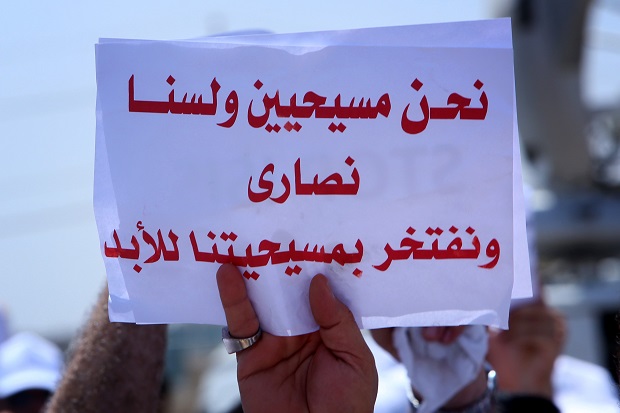The Mar Behnam monastery outside Mosul, seized by ISIS just over a week ago, bears an inscription in the Turkic language of the Mongols who invaded Iraq in the 13th century. It asks for ‘the peace of Mar [Saint] Behnam to come down and rest on the Khan, his elders and his wives’.
Why should Mongols revere Behnam, a convert to Christianity who was martyred by the region’s Zoroastrian ruler in the fourth century? The answer is that the Church of East to which Behnam converted had been the world’s greatest Christian Church. Its missionaries were firmly established in China by the seventh century. It was independent of both Rome and Byzantium, teaching that Christ’s human and divine natures were separate — a doctrine known as Nestorianism. The author of the Turkic inscription may have been a Nestorian Mongol, or have practised a mixture of faiths.
Most modern Christians have no idea that a gigantic Church worshipping in Syriac — a form of Jesus’s mother tongue, Aramaic — once spread from the Mediterranean to the Pacific. And this ignorance helps explain the shamefully sluggish reaction to the news that the last members of this community in the Middle East are being cleansed from the soil by fundamentalist Muslims.
The direct descendants of the Church of the East belong to the Assyrian Church — now so persecuted in its homeland that its patriarch is based in Chicago. The few remaining Assyrians in Iraq are on good terms with Syriac Christians in communion with Rome (the Chaldean Church) and Constantinople (the Syrian Orthodox). They cluster together for safety, no longer arguing about the finer points of the Creed. The Mar Behnam monastery is now Catholic — but, as of this month, empty of monks. Like the Christians of Mosul, they have been driven out like cattle.
The psychotic crimes of ISIS have, finally, awakened the West to the long-running and distinctly Nazi-like Islamist campaign against Christians in Syria and Iraq. There was a demonstration in support of them in London at the weekend — though it was overshadowed by the fashionable anti-Israel protests.
Perhaps the crowds would have been bigger if the West had been paying attention to the desperate pleas for help from Chaldeans and Assyrians over the past decade. But it turned away in boredom. Partly this was because defending persecuted Christians doesn’t stir the blood of Islingtonian anti-colonialists; partly it was thanks to the aforementioned historical ignorance — I’d be amazed if any state school in Britain, including Catholic ones, teaches pupils about the ancient Churches of the East. Either way, the damage is done. The monks of Mar Behnam aren’t coming back.







Comments